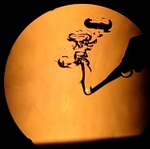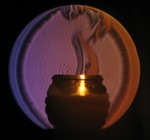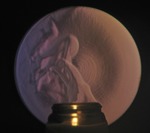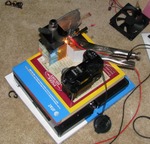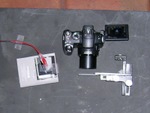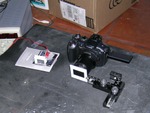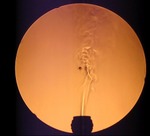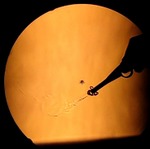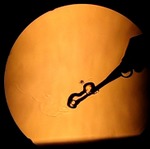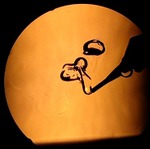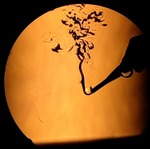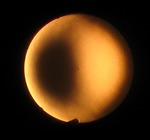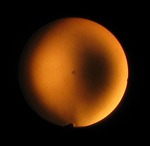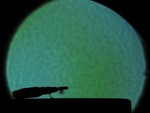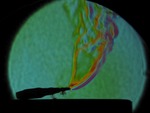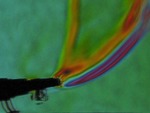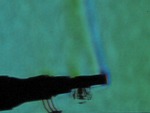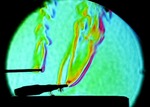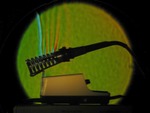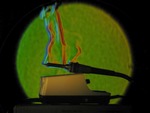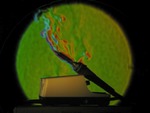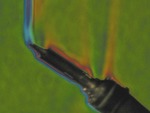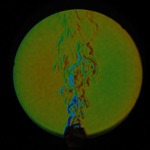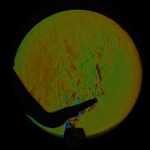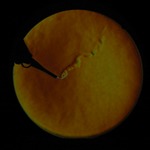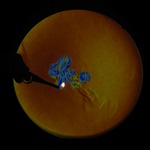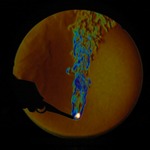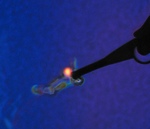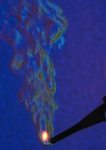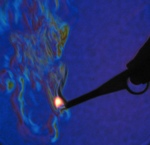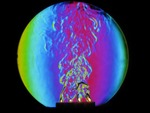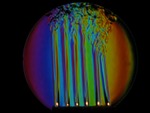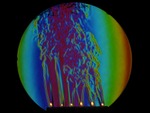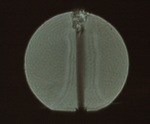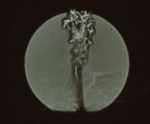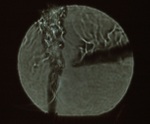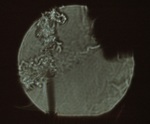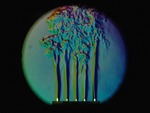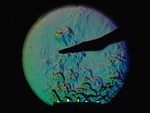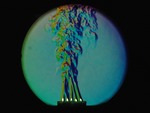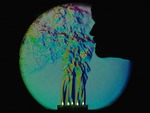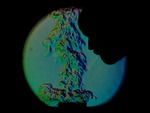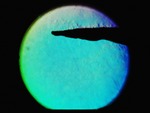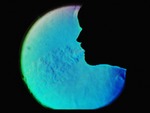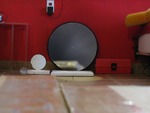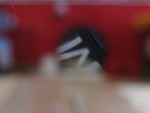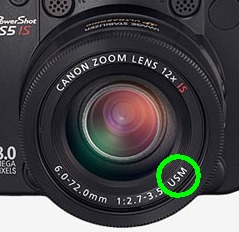Schlieren Photography - Seeing Air
(Note: Click any image on this page for a larger view.)
I also have a Schlieren Tutorial page I have written up with tips and some explanations on how it all works.
Visit Andrew Davidhazy's Schlieren Photography Principles and also Schlieren Optics from Harvard to see where I got most of my information. Both are good resources.
The photos on this page are also on My Flickr Account.
Mirror mirror on the wall...
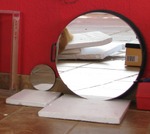
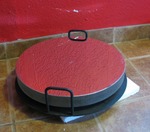
There are two main ways to set up a Schlieren system. The most common is called Z-Type and uses two identical mirrors and several lenses. I use a single mirror system, where the main advantage is you only need one mirror. This is a big advantage when you only HAVE one mirror!
I started out with a small 6" telescope mirror pictured above. (It's the small one to the left... :-) But recently I ran across an enormous 18" f4.5 Galaxy Optics mirror in a salvage yard of all places! It has some surface scratches and some damage in the very center but is in surprisingly good shape. It lets me visualize much larger experiments. It is also easier to set up in some ways, but still takes a lot of aligning and measuring.
Here are some old images from the 6" mirror...
You can also see my high-tech setup, with phone books for a lab-jack, vice grips for a light source mount, razor blades for a gap and cardboard and tape to hold it all together. I do have a scavenged beam-splitter in use, but it has drawbacks in it causes reflections and makes the light source dimmer. This setup is using two colored bits of plastic instead of the razor edge.
(The 18" stuff further down looks MUCH better than this!)
Now some shots using the monster 18"...
I have a bit better of a setup now. Everything is on a nice, heavy slate tile which is positioned at the right height and leveled so I can move things around without worrying about the height. The light source is a bright white LED shining through a pinhole. And the filter is on an X-Y stage to fine tune it into place.Oct 2009 Update: I built a new platform from parts I salvaged.
The only problem I currently have is that the camera I have cuts out a lot of the image due to the complicated internals of the superzoom lens. Still working on fixing that. I have a page explaining the problems with superzoom cameras in more detail.
This is without any razor or color filters. The color is from the automotive tail light lamp I was using before switching to the LED.
A single mirror Schlieren is almost exactly like a Foucault test, and here we have some neat looking images from partially covering the light source. Even with nothing in the mirror you can see some interesting things. Moving the camera and light slightly will produce varied images and patterns.
I printed some slides with various color patterns on them to try and have been getting good results.
The pictures below are showing a small butane torch. The first shows a stream of unlit butane, then the lit torch, then a closeup of the torch head (I find this one my favorite), then shut down and cooling, and the last shows a glass tube I heated in the flame. The next four are of a soldering iron heating up.
7/10/2009 Update: Below are some pictures I took with my friends Nikon D70s. The complicated zoom lens on my hand-held blocks some of the light from the mirror, where the much more simple telephoto on the D70s deals with it perfectly. The second picture of the lighter shows the flame igniting along the path of the butane.
7/24/2009 Update: When in doubt, add more candles!
7/26/2009 Update: Here are some shots using a camera without a lens. Since the image is projected by the light source, all one needs to do is put the sensor in the path until you get an image. The Schlieren effect comes out nicely, but the shadows of the physical objects are blurry.
7/27/2009 Update: I am using a different slide to color these and I like the effect a lot. The last one is trying to replicate that cough photo by Gary Settles that has been in the news. Not as good of course, since he is an expert who does this for a living. But I'm just happy I got something to show up at all!
And finally, more YouTube movies.
Random Stuff...
This is just a demonstration of the focusing power of a concave mirror.
The first is a shot of the mirror focusing on the mirror surface itself, exactly 161.2 inches away.
The second is the camera in super macro mode, with the focus at 0cm.
You can clearly see the "M" on the lens as if the mirror was right up against the camera lens.
